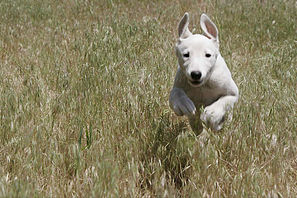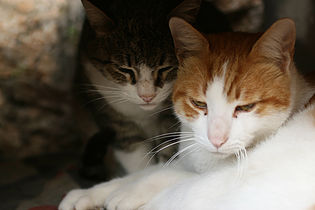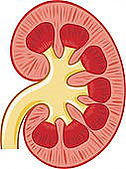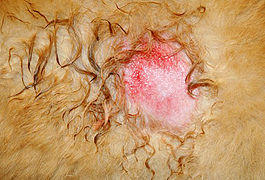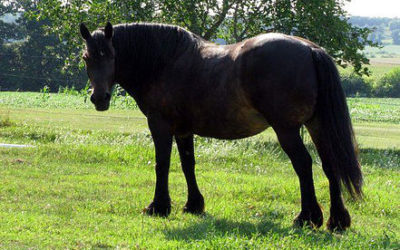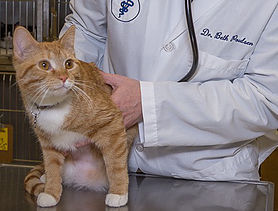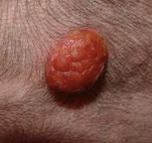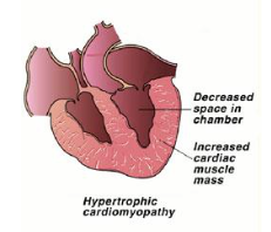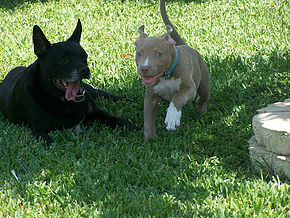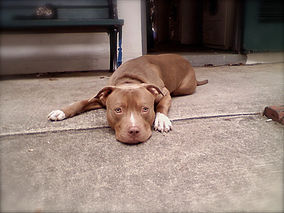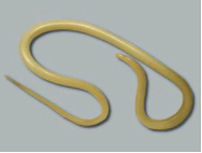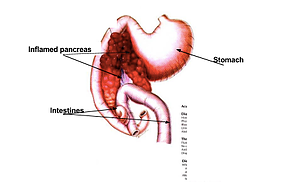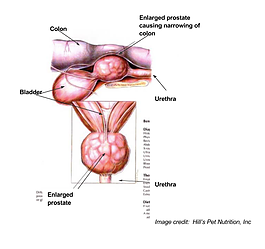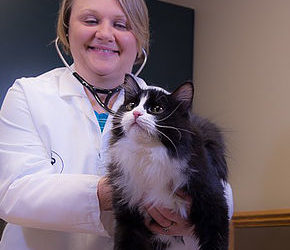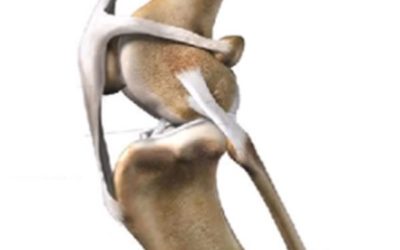Education Materials
Mast Cell Tumor
Mast cell tumors are one of the most common skin tumors in the dog. They arise from a population of inflammatory cells called mast cells. Mast cells are filled with granules of inflammatory mediators such as histamines. When manipulated these granules are released...
Canine Demodex
Overview Demodectic mange is caused by a microscopic Demodex mite. All dogs have demodex mites on their skin that live within the hair follicles. Most dogs live in harmony with their mites, never suffering any consequences from being parasitized. However, if the dog's...
Calcium Oxalate Uroliths
Why do Calcium Oxalate Uroliths form? Genetics, dietary issues and some metabolic diseases can predispose pets to the formation of calcium crystals or stones. Pets that have more acidic (low) urine pH and very concentrated urine can be factors in calcium oxalate...
Chronic Kidney Disease
General Information Chronic kidney disease refers to a condition in which the kidneys have not been performing at least one of their main tasks adequately, resulting in blood or physical abnormalities. Normal kidneys filter the blood, removing wastes and excreting...
Neck and Back Pain in Pets
Neck or back pain are two common causes of discomfort in our pets. You may notice subtle changes such as lack of jumping on/off of things, having difficulty with stairs, standing in a hunched position, difficulty getting comfortable laying down or getting up or even...
Struvite Uroliths
Why do Struvite Uroliths form? Several factors are needed to form a struvite stone. Struvite is a urinary mineral composed of ammonium, phosphate and magnesium. These three substances are common in urine, but when they are in high enough concentrations they bind...
Grape/Raisin Toxicity
Grapes and raisins can be toxic to dogs resulting in kidney failure. It is unknown at this time which part of the grape causes toxicity. Ingestion of as little as 1 or 2 grapes can result in toxicity. Not every dog or cat is susceptible and some dogs can tolerate...
Hot Spots
Hot spots are a common dermatologic condition of dogs. Hot spots are the result of a superficial skin infection – in the early stages the skin will turn red, become moist and itchy. Often hair loss will occur as a result of chewing and infection. Frequently this area...
Recognizing a Choke in Your Horse
Would you recognize choke in your horse? The word choke is a bit of a misnomer in the horse. In people it refers to an obstruction of the trachea or windpipe, usually with a piece of food. In horses the obstruction is of the esophagus not of the airway. This means...
Laminitis or Founder?
Laminitis is the inflammation of the tissues which connect the hoof wall to the coffin bone. This can occur in horses of any age, sex and size, and it can occur due to multiple factors. Severity may range from mild to very severe cases in which euthanasia may be...
Recognizing Overheating in Your Horse
Overheating can be a serious problem in horses. More often this is an issue in summer with warm, humid weather; yet it can occur at all times of the year. As in any species, overweight horses are more prone to overheating. Any sort of breeze, even those supplied...
Feline Upper Respiratory Infection
Feline upper respiratory infections are a common cause of nasal congestion, sneezing and ocular discharge in cats. Occasionally these cats will have more severe symptoms like a fever, cough, and decreased appetite as the infection progresses. Causes of feline...
Feline Lower Urinary Tract Disease
Feline Lower Urinary Tract Disease (FLUTD) describes the one or more from the following group of clinical signs: Bloody urine Straining and/or pain when urinating Urinating in unusual places Urinary blockage Over grooming the external genitals These symptoms can occur...
Histiocytomas
Canine cutaneous histiocytomas are common tumors that are unique to the dog. They occur most often in young dogs, but can be seen in dogs of any age. Histiocytomas can be found in any breed, but are most common in Labradors, Staffordshire terriers, Dachshunds and...
How-To: Collecting Urine from a Cat
Most cats are very uncomfortable with a container being slipped underneath them when they are in their litter box, so it is a bit of a challenge to obtain a clean urine sample from a cat. To aid you in this adventure, we have put together some suggestions to help make...
Hyperthyroidism in Cats
The thyroid glands are located in the neck and play a vital role in regulating thebody’s metabolic rate. Hyperthyroidism is a disorder characterized by the overproduction of thyroid hormone and a subsequent increase in metabolic rate. The thyroid gland enlarges with...
Addison’s Disease (Hypoadrenocorticism)
Addison’s disease is a condition affecting the adrenal glands. The adrenal glands are located near each of your pet’s kidneys. These glands are responsible for releasing hormones that maintain water balance and regulate electrolytes; sodium, potassium and chloride....
Infectious Tracheobronchitis (“Kennel Cough”)
Kennel cough is a common contagious illness that develops in dogs that have been mingling with other infected animals. This can occur through boarding, grooming, dog parks, pet stores, family gatherings or nose-to-nose contact while out on walks through the...
Intestinal Parasites in Dogs and Cats
Parasites, or worms, are organisms that live at the expense of other animals. Dogs and cats commonly host parasitic infections which may be a health concern for both you and your pet. Intestinal parasites live primarily in the stomach and intestines where they feed...
Pancreatitis
Pancreatitis is a condition caused by inflammation of the pancreas, an organ of the digestive tract. The pancreas is located in the abdomen, lying close to the stomach and first part of the intestines. Functions of the pancreas include controlling blood sugar by...
Prostate Gland Disease
The prostate is a gland surrounding the urethra near the bladder in male dogs and cats. The purpose of the prostate gland is the production of sperm fluid. This gland can cause problems, especially in older, non-neutered pets. Prostate gland disease in neutered pets...
Sebaceous Gland Disorders
Sebaceous glands are small glands found throughout all haired skin. They secrete and oily substance (sebum), which coats the skin and hair, helping to retain moisture and keep the coat glossy. Occasionally these glands malfunction resulting in the following...
Urinary Incontinence
Urinary incontinence is the involuntary leaking of urine, often times occurring when a pet is sleeping or relaxed. It is important to differentiate this from behavioral urinary issues such as submissive urination, territorial marking, loss of housetraining due to age,...
Cranial Cruciate (ACL) Disease
What is a Cranial Cruciate Ligament Injury? The canine knee (stifle) joint is a hinge joint that is anatomically similar to the human knee. Like human athletes, this joint is often involved in injuries causing lameness in the dog and cat. The stifle is composed of...


